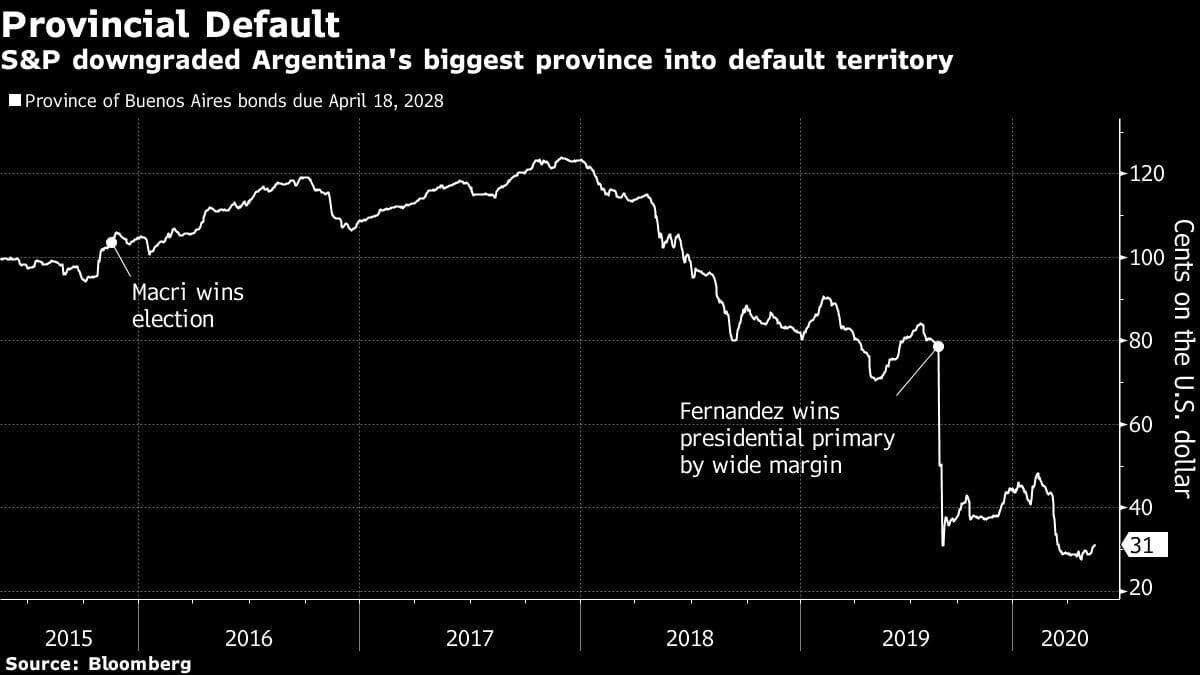
(Bloomberg) -- Argentina’s largest and most populous province was cut to selective default by S&P Global Ratings after it missed a deadline to make a $150 million payment.
The province is considered to be in selective default because negotiations with creditors are ongoing, making the proposal a “distressed exchange,” according to an S&P statement. Buenos Aires extended this week to May 26 an offer to restructure $7 billion of overseas debt. The default highlights risks for the national government as it pursues similar talks with bondholders.
“The specifics of the proposal, coupled with the stressed economic and financial conditions in Argentina and the province, are consistent with our view of the offer as a distressed exchange and tantamount to default,” S&P analysts led by Buenos Aires-based Carolina Caballero wrote in a statement.
Investors had long-fretted that bonds sold by the Province of Buenos Aires could be at risk as Argentina grappled with a budget deficit, high inflation and the deepening Covid-19 pandemic. The downgrade late Friday is unlikely to trigger litigation or demands for an acceleration in payments as the province remains in talks with creditors. Still, it underscores the challenges facing President Alberto Fernandez’s government as it pursues similar talks with bondholders.
Buenos Aires said earlier this week that it was “completely committed” to an orderly, good faith process, according to a statement. The proposal asks investors for a three-year grace period on bond payments and a steep cut to interest rates.
READ MORE: Here’s What You Need to Know About Argentina’s Debt Crisis: Q&A
Argentina’s prolonged economic downturn, exacerbated by the pandemic and the associated lockdown measures, further eroded the province’s already weak tax revenue, according to S&P. The Province of Buenos Aires has some of the nation’s highest infection figures, which could delay any re-opening. It also puts pressure on the province’s health care and social safety net expenditures.
The province has asked creditors to come forward with a plausible counteroffer, and said it has an “ongoing dialogue” with investors that haven’t accepted its initial proposal. Its bonds due in 2028 have tumbled to 31 cents on the dollar from as high as 80 cents back last August.
S&P added that it could raise the rating on the province following the completion of its debt restructuring and after the issuance of new bonds.
(Updates to add statement from S&P Global Ratings in second paragraph)
For more articles like this, please visit us at bloomberg.com
©2020 Bloomberg L.P.